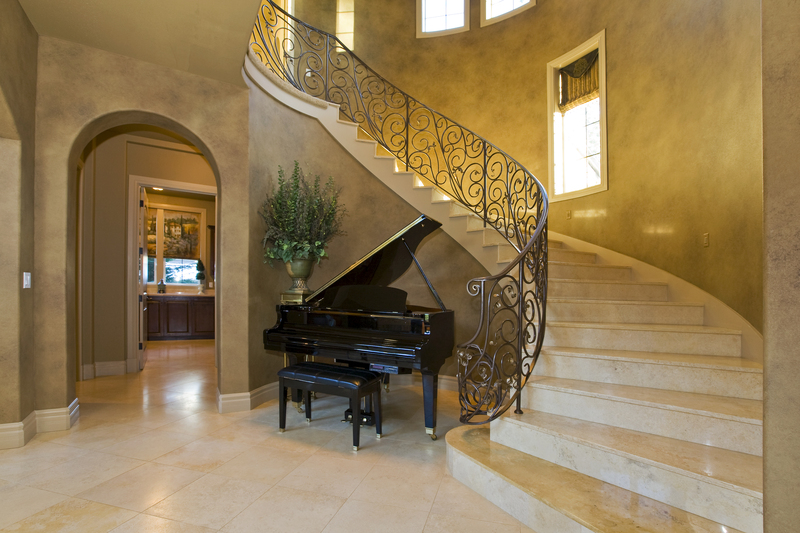Safe and Sound: The Expert Way to Move Your Piano Safely
Posted on 22/05/2025
Safe and Sound: The Expert Way to Move Your Piano Safely
Pianos are not only majestic instruments that produce beautiful music, but they are also significant investments--both emotionally and financially. Whether you are a professional musician, a hobbyist, or someone who treasures family heirlooms, knowing the expert way to move a piano safely is essential. If you are planning a move, or simply rearranging your home, understanding the necessary steps and precautions can be the difference between a seamless relocation and a costly disaster.
Why Moving a Piano Requires Special Attention
Pianos come in various shapes and sizes, from compact uprights to grand concert pianos. Regardless of type, they are all:
- Heavy (ranging from 300 to over 1,200 pounds)
- Fragile (interior mechanics and fine wood finishes)
- Awkwardly shaped (making them difficult to maneuver)
- Valuable (both monetarily and sentimentally)
Moving a piano improperly can result in damage to the instrument, injury to movers, and harm to your property. That's why understanding the expert strategy for moving pianos securely is indispensable.

Types of Pianos and Their Moving Challenges
Before you start planning your move, it helps to understand your specific piano type. Each kind poses its own set of challenges:
Upright Pianos
These pianos are more compact but still extremely heavy and top-heavy. Their vertical structure can make them particularly tricky to navigate through doors and around tight corridors.
Grand and Baby Grand Pianos
With their wide, delicate frames and three legs, grand pianos are especially challenging to transport. They often require more people, special tools, and even partial disassembly.
Piano Moving Myths Debunked
- Myth 1: "Four strong friends can safely move a piano."
- Myth 2: "Pianos are sturdy--they can handle a little bumping."
- Myth 3: "Any moving company can relocate a piano."
Reality: Pianos have delicate interior mechanisms--over 10,000 moving parts! Professional expertise is vital to avoid major and sometimes irreparable damage.
Expert Tips: The Right Way to Move a Piano Safely
Key Preparations Before the Move
- Measure everything
- Measure the piano: Length, width, and height
- Measure doorways, staircases, and hallways: Ensure the piano fits through all passages
- Plan the route
- Clear all obstacles
- Protect floors, especially hardwood or tiled surfaces
- Account for sharp turns, narrow pathways, and steep stairs
- Secure the right equipment
- Piano dolly (strong, with locking wheels)
- Piano board or skid board (especially for grand pianos)
- Moving straps and heavy-duty blankets
- Protective gloves and proper moving shoes
- Recruit a trained team
- At least 3-4 capable movers (depending on piano size)
- Assign clear roles to each person--communication is key!
How to Move an Upright Piano
- Lock and close the lid to protect the keys and inner workings.
- Wrap the entire piano with moving blankets and secure with tape or straps.
- Lifting technique matters: Always lift from the base, never by the legs or pedals.
- Keep the piano upright at all times. Tilting it can damage internal components.
- Use a piano dolly and straps for easier rolling and better stability.
- If stairs are involved, take extreme caution or hire experts--this is where many accidents happen.
Moving a Grand or Baby Grand Piano: The Professional Way
- Remove the lid and pedals.
- Carefully unscrew and wrap each piece in soft blankets.
- Detach the legs
- Support the body as you remove each leg. Each should be wrapped and labeled.
- Use a piano board/skid board
- Tip the piano gently onto the board, cushioning with blankets.
- Securing the instrument tightly will prevent sliding during the move.
- Transport with a dolly and straps
- Move slowly and communicate at every step.
- Have spotters ready for any incline or stairs.
Loading the Piano into a Moving Truck
- Use a ramp: Avoid lifting; rolling is safer for both the piano and the movers.
- Ensure the piano is secured with ratchet straps so it cannot shift during transit.
- Place the piano against a wall of the truck--never in the middle, to minimize movement.
- Do not stack items on top of the piano--this can damage both the finish and the internal action.
Should You Hire Professional Piano Movers?
Moving a piano is a task best left to professional piano movers for several reasons:
- Specialized equipment: Pros have the right tools for every piano type and moving situation.
- Experience and skill: Expert movers know how to avoid costly accidents and injuries.
- Insurance: Professional companies offer insurance in case of damage.
- Peace of mind: You can focus on your move, while knowing your instrument is in safe hands.
Ultimately, while DIY moves may seem cost-effective, the risks and potential damages often outweigh the benefits.
Common Mistakes to Avoid When Moving a Piano
- Underestimating the piano's weight: Don't guess--verify the exact weight and size.
- Lack of planning: Not preparing the moving path leads to last-minute complications.
- Improper lifting: Lifting from the legs or without adequate support can break parts and cause injuries.
- Insufficient protection: Never move a piano without wrapping and padding.
- Forgetting to retune after the move: Temperature and movement will shift your piano out of tune.
Additional Pro Tips for Keeping Your Piano Safe
Climate Control
Pianos are sensitive to humidity and temperature changes. During the move, minimize exposure to direct sunlight, rain, or extreme temperatures. If storing your piano, opt for climate-controlled storage.
Insurance Matters
Check your insurance provider to confirm the extent of your coverage. Professional movers typically offer in-transit insurance, but consult your homeowner or renter's policy as well.
Post-Move Care
- Tune your piano after it acclimates (typically 2-3 weeks).
- Check for any physical or mechanical damage.
- Schedule routine maintenance with a professional piano technician.

Frequently Asked Questions About Piano Moving
How much does it cost to move a piano?
Costs vary based on piano type, move distance, access (stairs, elevators), and urgency. Local moves typically range from $200-$500 for upright pianos and up to $1,000+ for grand pianos. For cross-country, prices are higher. Always request a detailed quote from your chosen expert movers.
Can I move a piano upstairs or downstairs?
Yes, but it is highly recommended to use professionals for stairs. Special equipment such as stair climbers, additional manpower, and proper rigging techniques are needed.
How soon should I tune my piano after moving?
Wait at least 2-3 weeks for your piano to adjust to its new environment. Then, schedule a professional tuning for the best sound quality.
What if my piano is an antique?
Notify your movers in advance. Antique pianos require extra care, delicate handling, and sometimes even custom crating. Insurance is a must for these valuable instruments.
Conclusion: Prioritize Safety When Moving Your Piano
Moving a piano is a complex endeavor demanding careful planning, the right equipment, and expert knowledge. Whether you choose to hire professional piano movers or tackle the job yourself, remember that the key to a safe and sound move lies in preparation and respect for your instrument's uniqueness.
- Measure and clear the route in advance.
- Invest in proper gear and protective coverings.
- Enlist adequate help, or better yet, bring in the experts.
- Above all, never compromise on safety--for both your piano and your moving team.
By following these expert-approved piano moving tips, you ensure your beloved instrument arrives at its destination unscathed--truly safe and sound. Your piano will reward you with many more years of musical joy in its new home!



